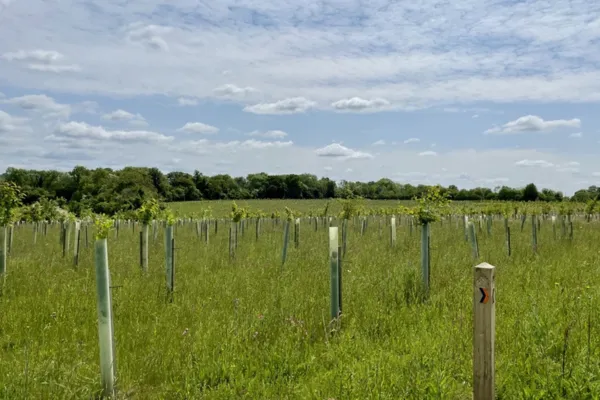
What lifestyle farmers need to know about retiring land into the ETS
For lifestyle farmers considering how to make the best use of their land, the Emissions Trading Scheme (ETS) presents an opportunity to generate income by retiring uneconomic pasture and earning carbon credits. If you have underutilized land, especially areas that are difficult to farm, the ETS could offer financial incentives while also benefiting the environment.
What is the ETS?
The Emissions Trading Scheme (ETS) is New Zealand’s primary tool for reducing greenhouse gas emissions. It operates as a cap-and-trade system, where businesses that emit greenhouse gases (GHGs) must purchase carbon credits (New Zealand Units or NZUs) to offset their emissions. These units can be traded on the carbon market, creating financial opportunities for landowners who store carbon through forestry.
How lifestyle farmers can benefit from the ETS
For lifestyle farmers, the most relevant part of the ETS is forestry. If you have land that is unproductive for grazing, you may be able to register it under the ETS, plant trees, and earn NZUs for the carbon those trees absorb from the atmosphere. These NZUs can then be sold on the carbon market for revenue.
Retiring uneconomic pasture or moving away from farming livestock
If you have more than 1 hectare of land that is not actively farmed, you can convert it to forest and register it under the ETS.
Exotic forests (such as pines) tend to earn carbon credits faster than native trees, but native regeneration can also qualify.
Once registered, your trees will accumulate NZUs, which you can sell or hold for future value.
Some lifestyle farmers may choose to retire productive land from livestock farming due to rising compliance costs, personal preferences, or environmental reasons. The ETS provides an alternative income source in such cases.
While this option has benefits, widespread conversion of productive farmland to forestry has raised concerns about rural economies and food production.
Earning carbon credits
A forest planted after 31 December 1989 can earn carbon credits under the ETS.
The amount of NZUs earned depends on factors like tree species and growth rate.
One hectare of pine forest can generate roughly 20 to 30 NZUs per year.
The value of NZUs fluctuates, but at recent market rates of around $60-$80 per unit, a hectare of pine could generate between $1,200 to $2,400 per year in revenue.
Prices can change, so checking market rates before making decisions is recommended.
Understanding the market
The NZU market is not a simple buy-and-sell system like a stock exchange. Instead, credits are sold through brokers, private buyers, or auctioned by the government.
NZUs can be traded through the New Zealand Emissions Trading Register (NZETR), but this requires setting up an account and following compliance rules.
Prices fluctuate based on demand from emitters, government policy, and international climate agreements.
Some farmers choose to hold onto NZUs, anticipating price increases, while others sell them immediately for liquidity.
Consulting with a carbon market expert or forestry adviser can help maximize returns and navigate the complexities of selling credits.
Considerations
While registering land under the ETS can be financially rewarding, it’s important to consider the long-term commitments involved:
Selling carbon credits creates an obligation—if trees are later cleared, you may need to surrender NZUs (buying them back at market rates).
If land is planted in permanent forests, it may be difficult to convert back to other uses in the future.
Managing trees (pest control, thinning) may require some additional work.
Large-scale conversion of farmland to forestry could have economic and environmental downsides, including reduced agricultural output and changes in rural community dynamics.
Where to get more information
ETS Registration and Rules: www.teururakau.govt.nz
Ministry for the Environment (MfE): www.environment.govt.nz
NZU Market Prices & Trading Platforms: Consult carbon trading platforms or forestry consultants.
Final thoughts
For lifestyle farmers with uneconomic pasture or underutilized land, the ETS offers an opportunity to generate income while contributing to environmental sustainability. If you are considering planting trees, registering for the ETS can turn your land into a financial asset.
If you’re unsure whether the ETS applies to your property, seeking advice from MPI, a forestry consultant, or a carbon market expert could be worthwhile. Understanding the scheme now can help you take advantage of potential opportunities while ensuring you’re prepared for any future commitments.
More Resources
If you're considering how to make better use of your land or reduce livestock numbers, these may help:
Running the Farm – A practical overview of pasture management, fencing, water, and infrastructure for lifestyle blocks.

